Yaoyuan Wang
and Other Contributors
Towards Universal Offline Black-Box Optimization via Learning Language Model Embeddings
Jun 08, 2025Abstract:The pursuit of universal black-box optimization (BBO) algorithms is a longstanding goal. However, unlike domains such as language or vision, where scaling structured data has driven generalization, progress in offline BBO remains hindered by the lack of unified representations for heterogeneous numerical spaces. Thus, existing offline BBO approaches are constrained to single-task and fixed-dimensional settings, failing to achieve cross-domain universal optimization. Recent advances in language models (LMs) offer a promising path forward: their embeddings capture latent relationships in a unifying way, enabling universal optimization across different data types possible. In this paper, we discuss multiple potential approaches, including an end-to-end learning framework in the form of next-token prediction, as well as prioritizing the learning of latent spaces with strong representational capabilities. To validate the effectiveness of these methods, we collect offline BBO tasks and data from open-source academic works for training. Experiments demonstrate the universality and effectiveness of our proposed methods. Our findings suggest that unifying language model priors and learning string embedding space can overcome traditional barriers in universal BBO, paving the way for general-purpose BBO algorithms. The code is provided at https://github.com/lamda-bbo/universal-offline-bbo.
Pangu Pro MoE: Mixture of Grouped Experts for Efficient Sparsity
May 28, 2025Abstract:The surgence of Mixture of Experts (MoE) in Large Language Models promises a small price of execution cost for a much larger model parameter count and learning capacity, because only a small fraction of parameters are activated for each input token. However, it is commonly observed that some experts are activated far more often than others, leading to system inefficiency when running the experts on different devices in parallel. Therefore, we introduce Mixture of Grouped Experts (MoGE), which groups the experts during selection and balances the expert workload better than MoE in nature. It constrains tokens to activate an equal number of experts within each predefined expert group. When a model execution is distributed on multiple devices, this architectural design ensures a balanced computational load across devices, significantly enhancing throughput, particularly for the inference phase. Further, we build Pangu Pro MoE on Ascend NPUs, a sparse model based on MoGE with 72 billion total parameters, 16 billion of which are activated for each token. The configuration of Pangu Pro MoE is optimized for Ascend 300I Duo and 800I A2 through extensive system simulation studies. Our experiments indicate that MoGE indeed leads to better expert load balancing and more efficient execution for both model training and inference on Ascend NPUs. The inference performance of Pangu Pro MoE achieves 1148 tokens/s per card and can be further improved to 1528 tokens/s per card by speculative acceleration, outperforming comparable 32B and 72B Dense models. Furthermore, we achieve an excellent cost-to-performance ratio for model inference on Ascend 300I Duo. Our studies show that Ascend NPUs are capable of training Pangu Pro MoE with massive parallelization to make it a leading model within the sub-100B total parameter class, outperforming prominent open-source models like GLM-Z1-32B and Qwen3-32B.
TrimR: Verifier-based Training-Free Thinking Compression for Efficient Test-Time Scaling
May 22, 2025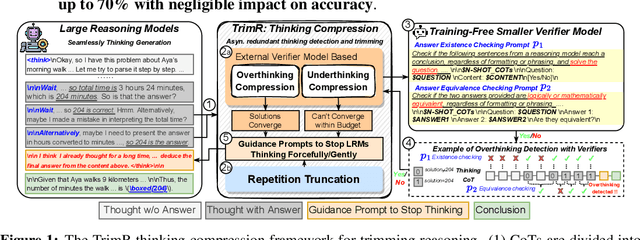
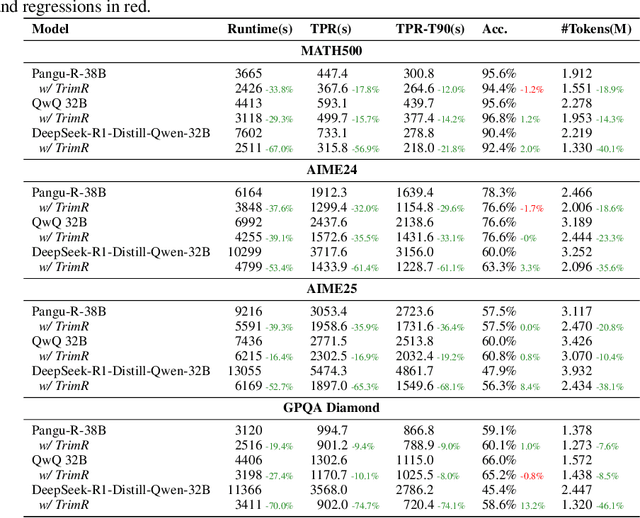


Abstract:Large Reasoning Models (LRMs) demonstrate exceptional capability in tackling complex mathematical, logical, and coding tasks by leveraging extended Chain-of-Thought (CoT) reasoning. Test-time scaling methods, such as prolonging CoT with explicit token-level exploration, can push LRMs' accuracy boundaries, but they incur significant decoding overhead. A key inefficiency source is LRMs often generate redundant thinking CoTs, which demonstrate clear structured overthinking and underthinking patterns. Inspired by human cognitive reasoning processes and numerical optimization theories, we propose TrimR, a verifier-based, training-free, efficient framework for dynamic CoT compression to trim reasoning and enhance test-time scaling, explicitly tailored for production-level deployment. Our method employs a lightweight, pretrained, instruction-tuned verifier to detect and truncate redundant intermediate thoughts of LRMs without any LRM or verifier fine-tuning. We present both the core algorithm and asynchronous online system engineered for high-throughput industrial applications. Empirical evaluations on Ascend NPUs and vLLM show that our framework delivers substantial gains in inference efficiency under large-batch workloads. In particular, on the four MATH500, AIME24, AIME25, and GPQA benchmarks, the reasoning runtime of Pangu-R-38B, QwQ-32B, and DeepSeek-R1-Distill-Qwen-32B is improved by up to 70% with negligible impact on accuracy.
Pangu Ultra MoE: How to Train Your Big MoE on Ascend NPUs
May 07, 2025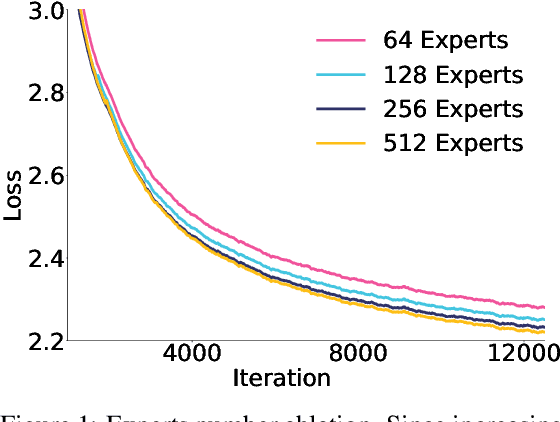

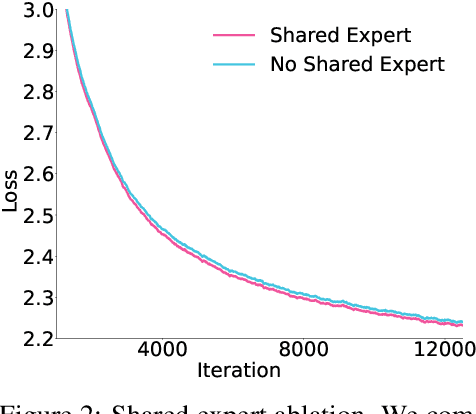

Abstract:Sparse large language models (LLMs) with Mixture of Experts (MoE) and close to a trillion parameters are dominating the realm of most capable language models. However, the massive model scale poses significant challenges for the underlying software and hardware systems. In this paper, we aim to uncover a recipe to harness such scale on Ascend NPUs. The key goals are better usage of the computing resources under the dynamic sparse model structures and materializing the expected performance gain on the actual hardware. To select model configurations suitable for Ascend NPUs without repeatedly running the expensive experiments, we leverage simulation to compare the trade-off of various model hyperparameters. This study led to Pangu Ultra MoE, a sparse LLM with 718 billion parameters, and we conducted experiments on the model to verify the simulation results. On the system side, we dig into Expert Parallelism to optimize the communication between NPU devices to reduce the synchronization overhead. We also optimize the memory efficiency within the devices to further reduce the parameter and activation management overhead. In the end, we achieve an MFU of 30.0% when training Pangu Ultra MoE, with performance comparable to that of DeepSeek R1, on 6K Ascend NPUs, and demonstrate that the Ascend system is capable of harnessing all the training stages of the state-of-the-art language models. Extensive experiments indicate that our recipe can lead to efficient training of large-scale sparse language models with MoE. We also study the behaviors of such models for future reference.
Pangu Ultra: Pushing the Limits of Dense Large Language Models on Ascend NPUs
Apr 10, 2025



Abstract:We present Pangu Ultra, a Large Language Model (LLM) with 135 billion parameters and dense Transformer modules trained on Ascend Neural Processing Units (NPUs). Although the field of LLM has been witnessing unprecedented advances in pushing the scale and capability of LLM in recent years, training such a large-scale model still involves significant optimization and system challenges. To stabilize the training process, we propose depth-scaled sandwich normalization, which effectively eliminates loss spikes during the training process of deep models. We pre-train our model on 13.2 trillion diverse and high-quality tokens and further enhance its reasoning capabilities during post-training. To perform such large-scale training efficiently, we utilize 8,192 Ascend NPUs with a series of system optimizations. Evaluations on multiple diverse benchmarks indicate that Pangu Ultra significantly advances the state-of-the-art capabilities of dense LLMs such as Llama 405B and Mistral Large 2, and even achieves competitive results with DeepSeek-R1, whose sparse model structure contains much more parameters. Our exploration demonstrates that Ascend NPUs are capable of efficiently and effectively training dense models with more than 100 billion parameters. Our model and system will be available for our commercial customers.
NavG: Risk-Aware Navigation in Crowded Environments Based on Reinforcement Learning with Guidance Points
Mar 03, 2025
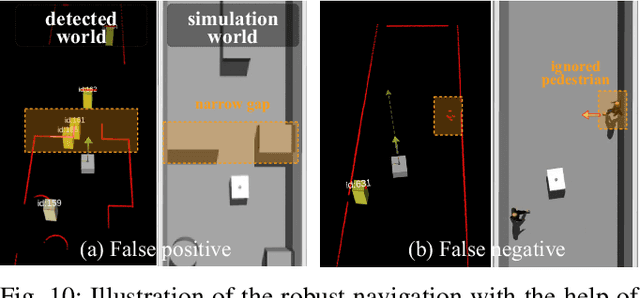


Abstract:Motion planning in navigation systems is highly susceptible to upstream perceptual errors, particularly in human detection and tracking. To mitigate this issue, the concept of guidance points--a novel directional cue within a reinforcement learning-based framework--is introduced. A structured method for identifying guidance points is developed, consisting of obstacle boundary extraction, potential guidance point detection, and redundancy elimination. To integrate guidance points into the navigation pipeline, a perception-to-planning mapping strategy is proposed, unifying guidance points with other perceptual inputs and enabling the RL agent to effectively leverage the complementary relationships among raw laser data, human detection and tracking, and guidance points. Qualitative and quantitative simulations demonstrate that the proposed approach achieves the highest success rate and near-optimal travel times, greatly improving both safety and efficiency. Furthermore, real-world experiments in dynamic corridors and lobbies validate the robot's ability to confidently navigate around obstacles and robustly avoid pedestrians.
Offline Model-Based Optimization by Learning to Rank
Oct 15, 2024


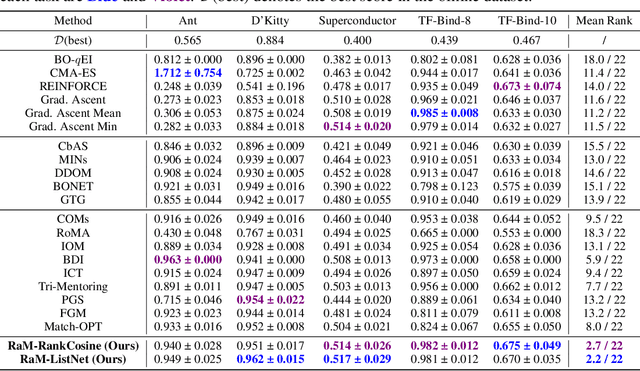
Abstract:Offline model-based optimization (MBO) aims to identify a design that maximizes a black-box function using only a fixed, pre-collected dataset of designs and their corresponding scores. A common approach in offline MBO is to train a regression-based surrogate model by minimizing mean squared error (MSE) and then find the best design within this surrogate model by different optimizers (e.g., gradient ascent). However, a critical challenge is the risk of out-of-distribution errors, i.e., the surrogate model may typically overestimate the scores and mislead the optimizers into suboptimal regions. Prior works have attempted to address this issue in various ways, such as using regularization techniques and ensemble learning to enhance the robustness of the model, but it still remains. In this paper, we argue that regression models trained with MSE are not well-aligned with the primary goal of offline MBO, which is to select promising designs rather than to predict their scores precisely. Notably, if a surrogate model can maintain the order of candidate designs based on their relative score relationships, it can produce the best designs even without precise predictions. To validate it, we conduct experiments to compare the relationship between the quality of the final designs and MSE, finding that the correlation is really very weak. In contrast, a metric that measures order-maintaining quality shows a significantly stronger correlation. Based on this observation, we propose learning a ranking-based model that leverages learning to rank techniques to prioritize promising designs based on their relative scores. We show that the generalization error on ranking loss can be well bounded. Empirical results across diverse tasks demonstrate the superior performance of our proposed ranking-based models than twenty existing methods.
GA-TEB: Goal-Adaptive Framework for Efficient Navigation Based on Goal Lines
Sep 16, 2024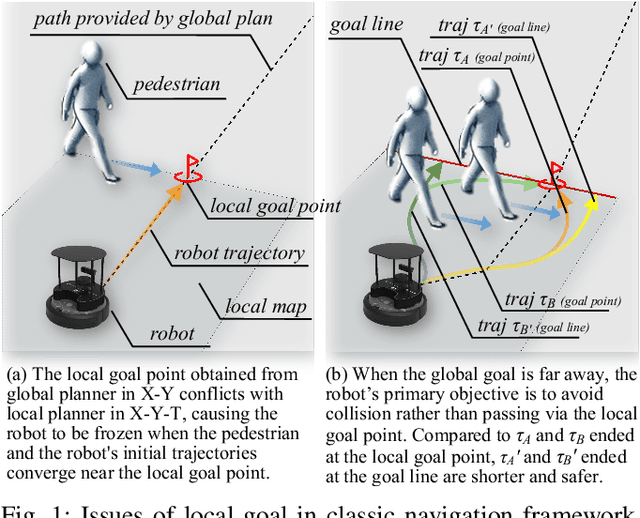


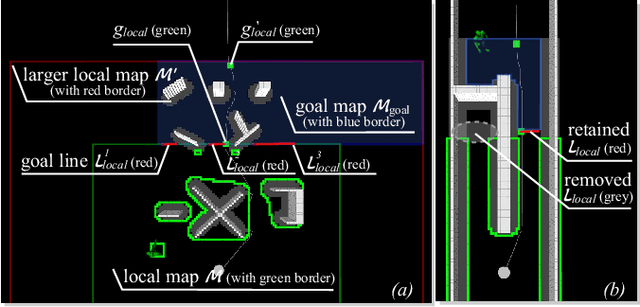
Abstract:In crowd navigation, the local goal plays a crucial role in trajectory initialization, optimization, and evaluation. Recognizing that when the global goal is distant, the robot's primary objective is avoiding collisions, making it less critical to pass through the exact local goal point, this work introduces the concept of goal lines, which extend the traditional local goal from a single point to multiple candidate lines. Coupled with a topological map construction strategy that groups obstacles to be as convex as possible, a goal-adaptive navigation framework is proposed to efficiently plan multiple candidate trajectories. Simulations and experiments demonstrate that the proposed GA-TEB framework effectively prevents deadlock situations, where the robot becomes frozen due to a lack of feasible trajectories in crowded environments. Additionally, the framework greatly increases planning frequency in scenarios with numerous non-convex obstacles, enhancing both robustness and safety.
Inherent Redundancy in Spiking Neural Networks
Aug 16, 2023



Abstract:Spiking Neural Networks (SNNs) are well known as a promising energy-efficient alternative to conventional artificial neural networks. Subject to the preconceived impression that SNNs are sparse firing, the analysis and optimization of inherent redundancy in SNNs have been largely overlooked, thus the potential advantages of spike-based neuromorphic computing in accuracy and energy efficiency are interfered. In this work, we pose and focus on three key questions regarding the inherent redundancy in SNNs. We argue that the redundancy is induced by the spatio-temporal invariance of SNNs, which enhances the efficiency of parameter utilization but also invites lots of noise spikes. Further, we analyze the effect of spatio-temporal invariance on the spatio-temporal dynamics and spike firing of SNNs. Then, motivated by these analyses, we propose an Advance Spatial Attention (ASA) module to harness SNNs' redundancy, which can adaptively optimize their membrane potential distribution by a pair of individual spatial attention sub-modules. In this way, noise spike features are accurately regulated. Experimental results demonstrate that the proposed method can significantly drop the spike firing with better performance than state-of-the-art SNN baselines. Our code is available in \url{https://github.com/BICLab/ASA-SNN}.
Dual Memory Aggregation Network for Event-Based Object Detection with Learnable Representation
Mar 17, 2023


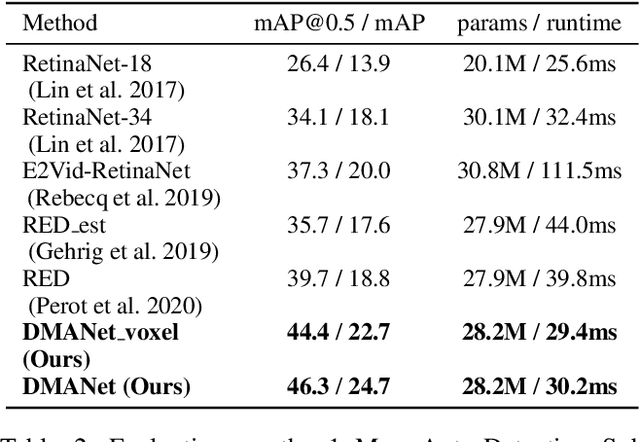
Abstract:Event-based cameras are bio-inspired sensors that capture brightness change of every pixel in an asynchronous manner. Compared with frame-based sensors, event cameras have microsecond-level latency and high dynamic range, hence showing great potential for object detection under high-speed motion and poor illumination conditions. Due to sparsity and asynchronism nature with event streams, most of existing approaches resort to hand-crafted methods to convert event data into 2D grid representation. However, they are sub-optimal in aggregating information from event stream for object detection. In this work, we propose to learn an event representation optimized for event-based object detection. Specifically, event streams are divided into grids in the x-y-t coordinates for both positive and negative polarity, producing a set of pillars as 3D tensor representation. To fully exploit information with event streams to detect objects, a dual-memory aggregation network (DMANet) is proposed to leverage both long and short memory along event streams to aggregate effective information for object detection. Long memory is encoded in the hidden state of adaptive convLSTMs while short memory is modeled by computing spatial-temporal correlation between event pillars at neighboring time intervals. Extensive experiments on the recently released event-based automotive detection dataset demonstrate the effectiveness of the proposed method.
 Add to Chrome
Add to Chrome Add to Firefox
Add to Firefox Add to Edge
Add to Edge